ELLIPTCAL SQUARES
In mathematics, an ellipse is a curve on a plane surrounding two focal points such that the sum of the distances to the two focal points is constant for every point on the curve. As such, it is a generalization of a circle, which is a special type of an ellipse that has both focal points at the same location. The shape of an ellipse (how 'elongated' it is) is represented by its eccentricity, which for an ellipse can be any number from 0 (the limiting case of a circle) to arbitrarily close to but less than 1.

If you want to know something more about ellipse in mathematics click here
Ellipse is not only about cosmology and mathematics: see below some important Italian squares...
Prato della Valle, Padova, Veneto
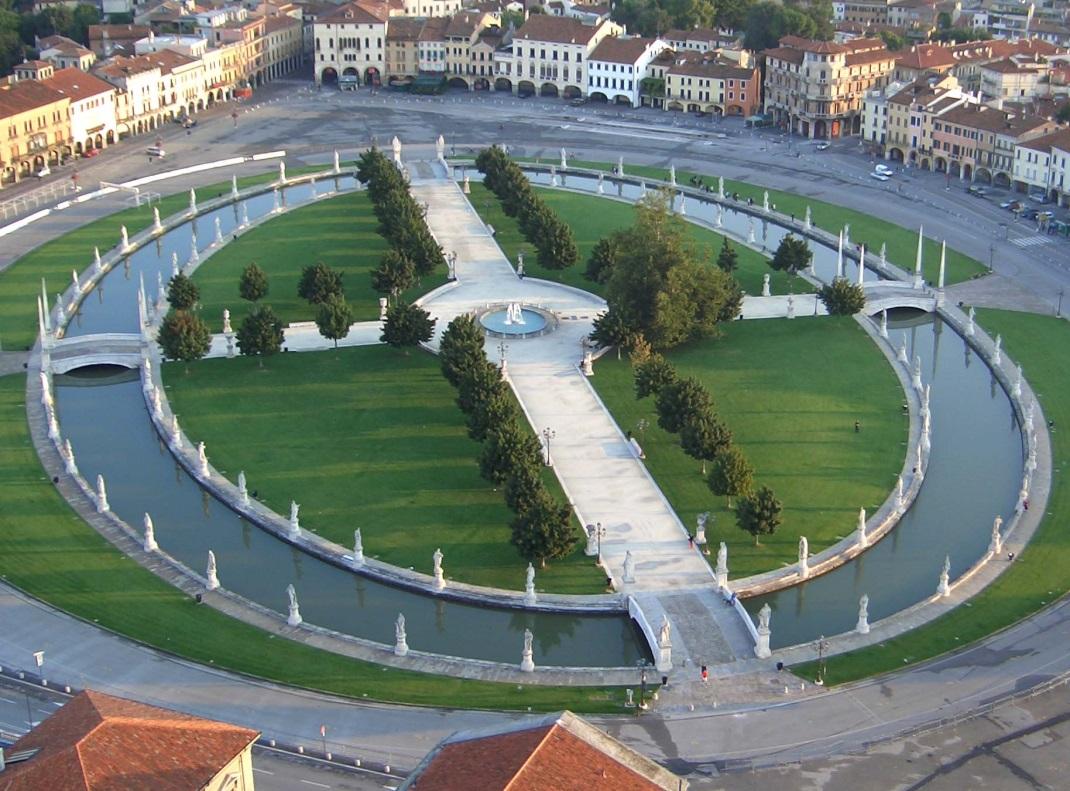
Prato della Valle is a 90,000 square meter elliptical square in Padova, Italy. It is the largest square in the city and one of the largest in Europe. Today, the square is a huge space with a green island in the center, “Isola Memmi”: there are four bridges, decorated with obelisks or statues of popes, to walk through. The island is surrounded by a small canal, fed by the river Bacchiglione and a row of 78 stone figures, which represent famous citizens of Padua and glorify the fame of the city.
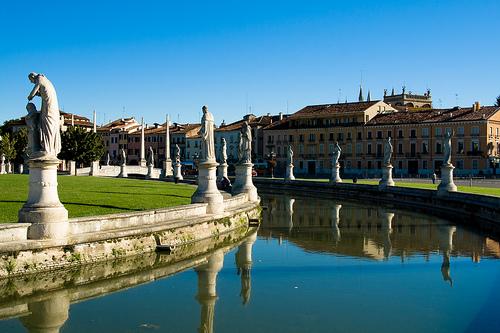

The history
A huge Roman arena called “Zairo” once stood here: also during Middle Ages it was used as a place for horse races and popular celebrations; later the remains were demolished and used for the construction of the Benedictine Abbey of “Santa Giustina”.
Because of many floods at the end of the 16th century the area became swampy and deserted.
For this reason in 1775 Andrea Memmo, whose statue is in the square, decided to restructure the entire area: he turned the unhealthy swamp into a meeting place, market and open theatre. The project, which was never fully completed, is represented in a famous copper engraving by Francesco Piranesi.

The project was approved and the preliminary excavations were done to install the plumbing system: everything was directed by Simone Stratico. With these excavations were found the remains of the ancient Roman theater.
Today
From the very beginning Prato della Valle has been so important for the Padovans, who frequently refer to it as “The Prato”. Even if firstly it was a valley without grass because of the marshland, today it is completely covered with grass and many small trees.
During the summer, the square is alive with many visitors who skate, stroll or study while tanning themselves in the sun; summer evenings are marked by the presence of teenagers and adults.
For several years, Prato della Valle has been the location of the Padovan section of the “Festivalbar” and recently it has host skating competitions too. Every New Year's Eve and during the Feast of the Annunciation in middle August, parties with music and fireworks take place in “the Prato”.
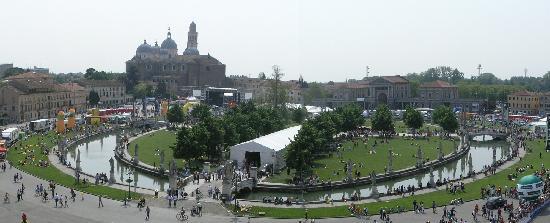
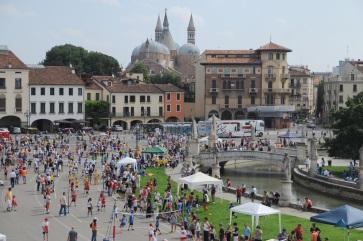
Saint Anthony’ s Marathon Volleyball Festival
St. Peter’s square, Rome, Lazio
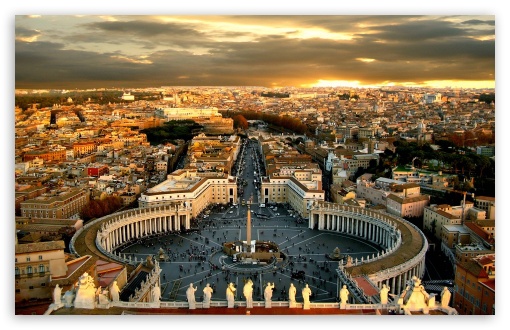
History and Geography
St. Peter’s square is located in front of St. Peter’s Basilica in the Vatican City, inside Rome, the capital of Italy. It was created by Lorenzo Bernini, a sculptor and architect. Its construction started in 1656 and was completed in 1667. It is bordered on two sides by semi-circular colonnades, which represent the arms of the church embracing the world. There are four rows of columns. The foci of the elliptical square are indicated by circular plates. If you stand on either of these plates and look at the nearest colonnade, it will seem that there is only one row of columns. In the center of the square stands an Egyptian obelisk, which is 41 meters tall. To the right and to the left of this obelisk there are two identical fountain.
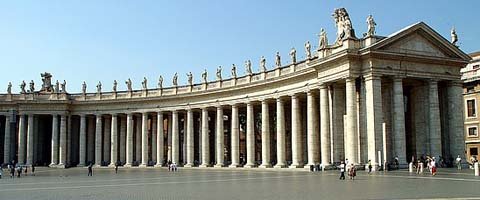
CAN YOU SEE THE FOCAL POINTS IN THE PICTURE BELOW?
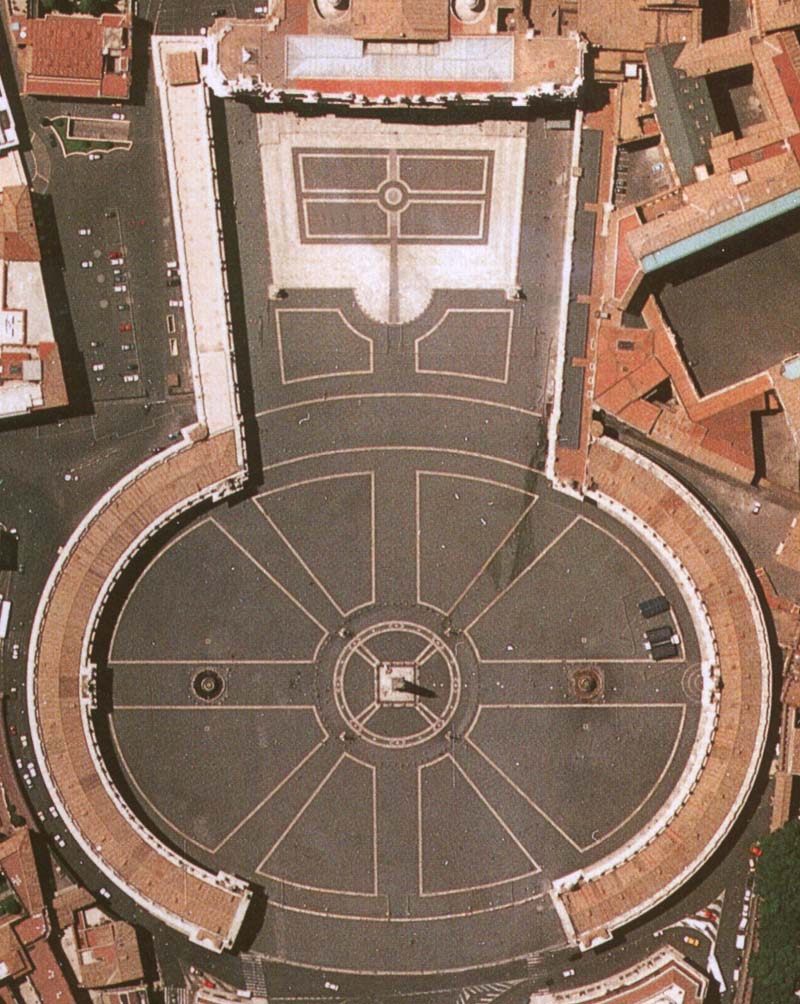
An ellipse is the set of all points on a plane whose distance from two fixed points F and G add up to a constant
. 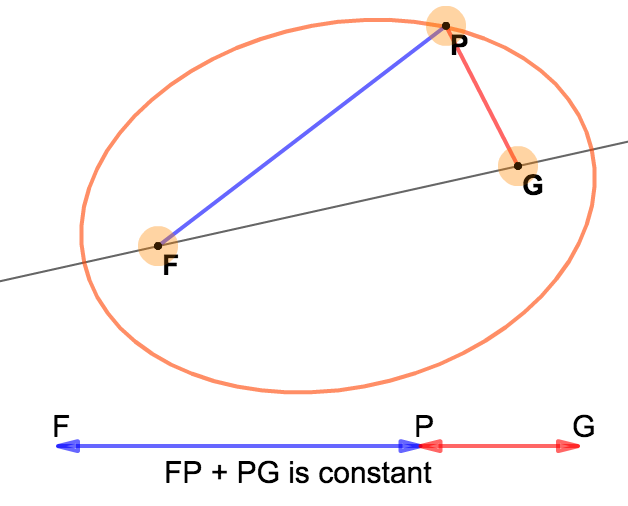
The points F and G are called foci.
Square of amphiteatre, Lucca, Toscana
The amphitheatre, built as the centre of entertainment outside the Roman town, is today the centre of town life and the very symbol of Lucca. It is a unique elliptical-shaped plaza, theatre of the life of the citizens of Lucca, closed in an embrace of medieval houses and, in spite of the passing of the millennia, is always alive and witness to innumerable changes.
When its was created, for spectacles and gladiator games, the amphitheatre ofLucca was an imposing structure, with fifty-four arches and a cavea able to hold as many as ten thousand spectators.
Its construction began in the 1st century AD under the Emperor Claudius and was concluded in the Flavian period, generously financed by a rich citizen, as seen from an honorary inscription discovered during excavations in the 1800s. In the Middle Ages, when this area became a plaza, it was called the "Parlascio" and this name was believed to come from "parlare", meaning "to talk", as it was the venue of popular assemblies.
In reality, however, it was a corruption of "paralisium", the Latin for "amphitheatre". In many towns, with the long sieges of the medieval period, the Roman structures were transformed into fortifications.
Lucca's amphitheatre suffered the same fate; during the Gothic Wars, under siege by Narsete, it was fortified and made impenetrable by the closure of the outside arches. When this function too ended, terraced houses were built on the surviving ruined structures, which were also used for construction materials.
These then became a powder magazine, a salt store, a prison which was dubbed the "grotte" (caves) and finally shops and eating places, while the centre of the plaza was divided into portions and in a certain period was used for vegetable patches. It was in the 1800s that an architect of Luca, Lorenzo Nottolini, restored the value of the ancient space making the amphitheatre a fundamental structure for the urban arrangement of the town. The buildings which had crowded the inside of the arena over the centuries were demolished and the newvia dell'Anfiteatro surrounded the ancient building.
The city thus gained a new oval space, which followed the same perimeter and the same volumes of the ancient building and was dedicated to the town market (not by chance it is called "Piazza del Mercato") while the originalamphitheatre retained its structures two metres below the road surface, with arches and vaults emerging at the shops that face onto the plaza.
Some of the Roman remains are still visible as we go along via dell'Anfiteatro, in the buildings bounding the plaza and in the lowest of the four arches leading into it, the only one left of the ancient structure.
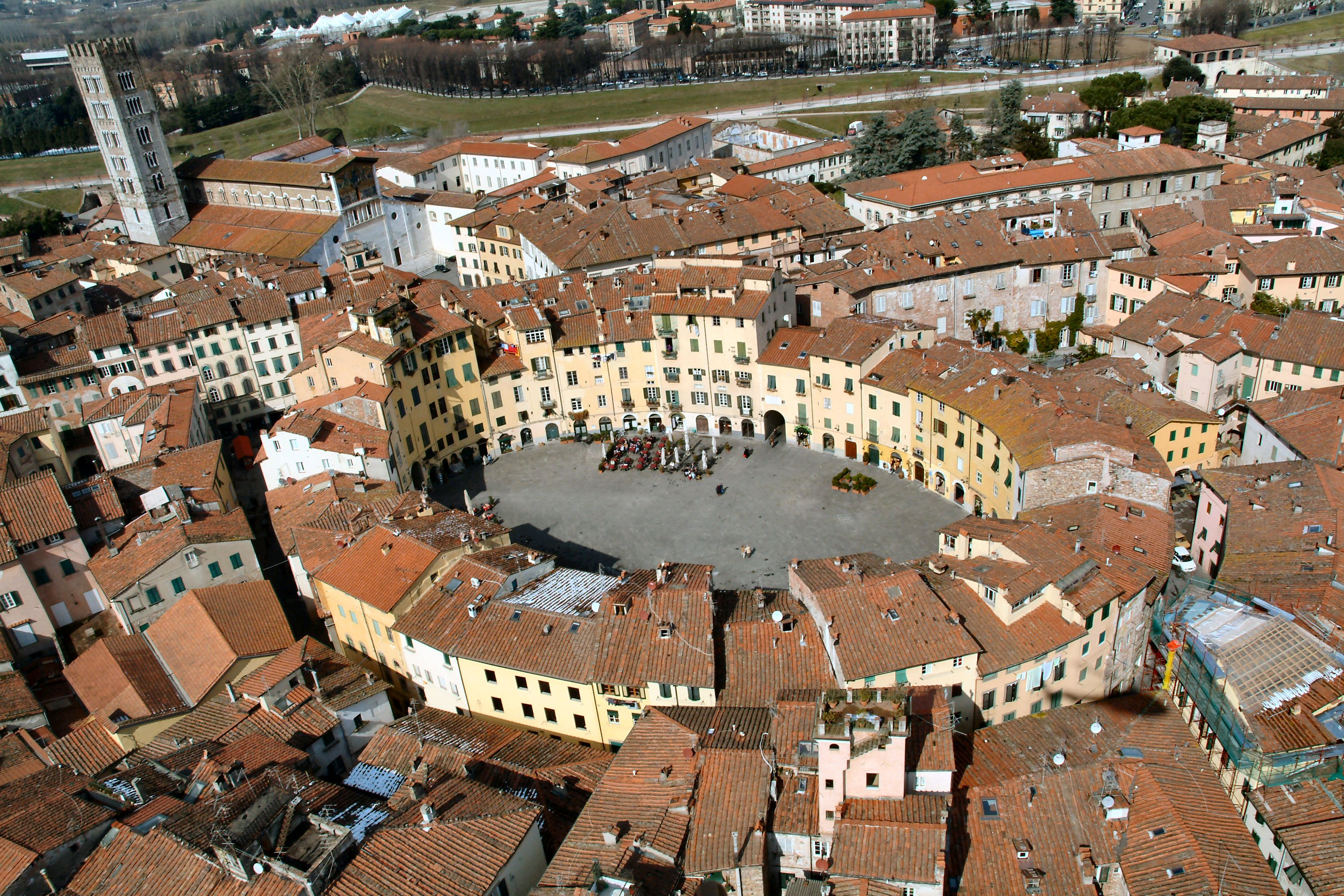
Source: http://www.italyguides.it/us/italy/tuscany/lucca/squares/piazza-dell-anfiteatro.htm
_______________________________
CIRCULAR SQUARE et al.
Circumference (from Latin circumferentia, meaning "carrying around") is the linear distance around the edge of a closed curve or circular object.The circumference of a circle is of special importance in geometry and trigonometry. Informally "circumference" may also refer to the edge itself rather than to the length of the edge. Circumference is a special case of perimeter: the perimeter is the length around any closed figure, but conventionally "perimeter" is typically used in reference to a polygon while "circumference" typically refers to a continuously differentiable curve.

Circle illustration with circumference (C) in black, diameter (D) in cyan, radius (R) in red, and centre or origin (O) in magenta. Circumference = π × diameter = 2 × π × radius.
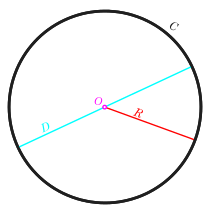
For or more details about the circle in mathematics click here
MONDAINO'S SQUARE
Mondaino is a municipality in the Province of Rimini in the Italian region Emilia-Romagna, located about 130 kilometres (81 mi) southeast of Bologna and approximately 25 kilometres (16 mi) southeast of Rimini.
The first quotation of “castrum quod vocatur Mons Dainus” dates back to 1069, when the village was donated by Pietro di Bennone Pier Damiani from Rimini; Mondaino was therefore ruled by the abbot of the Monastery of S. Gregorio in Conca together with the bishop of Rimini until when it yielded to the Municipality of Rimini in 1233, when it became a Municipality, together with the other municipalities and castles of the Dioceses. Under the rule of Malatesta from the end of the 13th century, for more than a century Mondaino was involved in the wars waged by this family, among its factions, against the Church and against the Montefeltro Family. After the Pontifical victory it passed from 1464 under the government of Fano; in the 16th century Fano and Mondaino were repeatedly sold and regained by the Apostolical Chamber and in the second half of that century there was a period of substantial unification with the Duchy of Urbino. In 1578 Mondaino went under the rule of Ravenna and then to Fano one; it returned to the rule of Ravenna in 1590 and stayed in the Legation of Romagna for two subsequent centuries. At the end of the 18th century, with Napoleon’s occupation, it became part of the Department of Rubicone and of the Cisalpine Republic, then from 1816 it became part of the Province of Romagna of the Pontifical State, up to the constitution of the Kingdom of Italy in 1861. 19th century. This is the most scenic “square” in the province thanks to its semi-circular shape: a wide exedra with
neo-classical portico. As central Via Roma leads from here it is affectionately known as the “frying pan square”. This is the heart of the town with the Malatesta castle, a treasure trove of art and history, looming ahead. It is the site of competitions between the districts in the Palio del Daino .
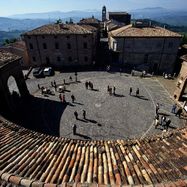
And now....a sicilian fountain:
FONTE KASSAR
Source Kassar has a circular shape, with a diameter of 6.10 meters, and is placed in a space belonging almost semicircular, delimited by a containment wall of variable height.
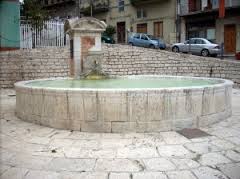
CIRCUMFERENCE: The circle is the locus of points equidistant from a given point called centre. The equation that describes the circunference in the Cartesian Plane is: ax^2+by^2+ax+by+c=0
GEOGRAPHY OF FONTE KASSAR
Fonte Kassar is located in “Castronovo di Sicilia”. This small town is in the province of Palermo and its population is 3598 people. The country's land area is 200 km2 and the town's patron is saint Vitale. The territory of Castronovo falls in area of Monti Sicani , a structural plateau , which separates the great pit of Caltanissetta in the East , from the basin of Salemi in the West. Characterize the area of the nature reserve Monte Carcaci and Lake Fanaco. Fonte Kassar is located in the area between the slope Kassar and the beginning of the Corso Umberto I.
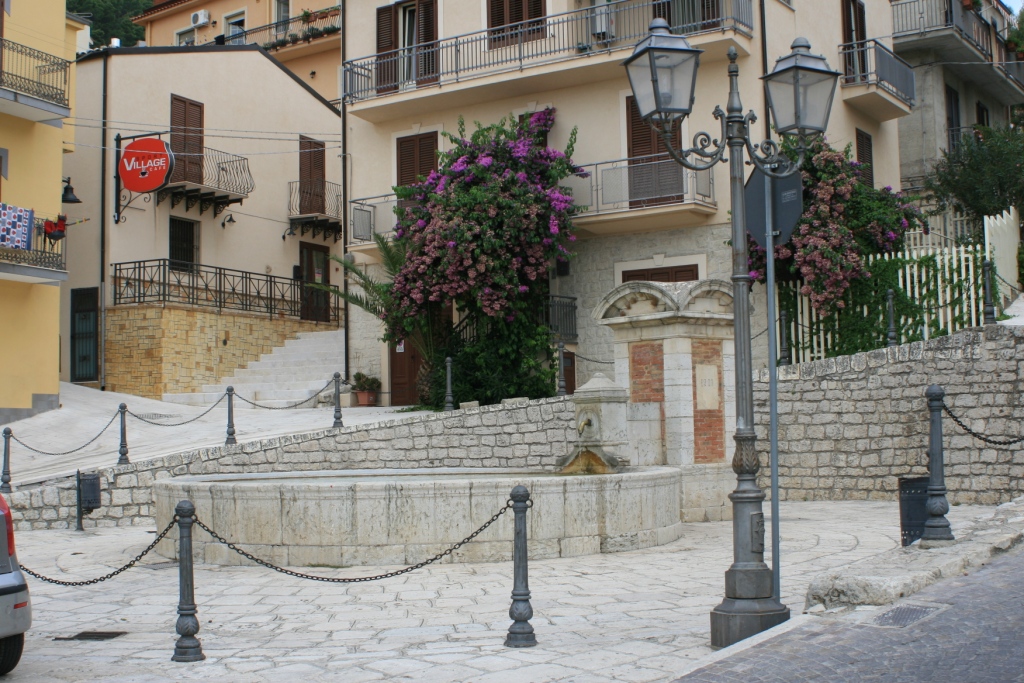
And a monument in Rome:
PANTHEON
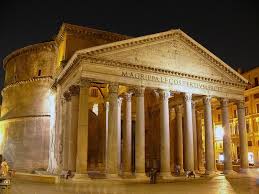 The Pantheon in Rome is the Roman monument with the greatest number of records: the best preserved, with the biggest brick dome in the history of architecture and is considered the forerunner of all modern places of worship. It is the most copied and imitated of all ancient works. The name comes from two Greek words pan, "everything" and teon "divine". Originally, the Pantheon was a small temple dedicated to all Roman gods. Built between 27 and 25 B.C. by the consul Agrippa, Prefect of the Emperor Augustus, the present building is the result of subsequent, heavy restructuring. The building is circular with a portico of large granite Corinthian columns (eight in the first rank and two groups of four behind) under a pediment. A rectangular vestibule links the porch to the rotunda, which is under a coffered concrete dome, with a central opening (oculus) to the sky. Almost two thousand years after it was built, the Pantheon's dome is still the world's largest unreinforced concrete dome. The height to the oculus and the diameter of the interior circle are the same, 43.3 metres (142 ft). It is one of the best-preserved of all Ancient Roman buildings. It has been in continuous use throughout its history, and since the 7 th century, the Pantheon has been used as a church dedicated to “St. Mary and the Martyrs" (Latin: Santa Maria ad Martyres) but informally known as "Santa Maria Rotonda". The square in front of the Pantheon is called Piazza della Rotonda. Pantheon is derived from the Ancient Greek "Pantheon" (Πάνθεον) meaning "of, relating to, or common to all the gods": (Pan /"Παν" meaning "all" + Theon / "θεον"= meaning "gods"). The Pantheon is in use as a church. Masses are celebrated there, in particular on important Catholic Holy day of obligation, as are weddings. The 4,535 metric tons(4,999 shorts tons) weight of the Roman concrete dome is concentrated on a ring of voussoirs 9.1 metres (30 ft) in diameter that form the oculus, while the downward thrust of the dome is carried by eight barrel vaults in the 6.4 metres (21 ft) thick drum wall into eight piers. The thickness of the dome varies from 6.4 metres (21 ft) at the base of the dome to 1.2 metres (3.9 ft) around the oculus. The height to the oculus and the diameter of the interior circle are the same, 43.3 metres (142 ft), so the whole interior would fit exactly within a cube (also, the interior could house a sphere 43.3 metres (142 ft) in diameter).
The Pantheon in Rome is the Roman monument with the greatest number of records: the best preserved, with the biggest brick dome in the history of architecture and is considered the forerunner of all modern places of worship. It is the most copied and imitated of all ancient works. The name comes from two Greek words pan, "everything" and teon "divine". Originally, the Pantheon was a small temple dedicated to all Roman gods. Built between 27 and 25 B.C. by the consul Agrippa, Prefect of the Emperor Augustus, the present building is the result of subsequent, heavy restructuring. The building is circular with a portico of large granite Corinthian columns (eight in the first rank and two groups of four behind) under a pediment. A rectangular vestibule links the porch to the rotunda, which is under a coffered concrete dome, with a central opening (oculus) to the sky. Almost two thousand years after it was built, the Pantheon's dome is still the world's largest unreinforced concrete dome. The height to the oculus and the diameter of the interior circle are the same, 43.3 metres (142 ft). It is one of the best-preserved of all Ancient Roman buildings. It has been in continuous use throughout its history, and since the 7 th century, the Pantheon has been used as a church dedicated to “St. Mary and the Martyrs" (Latin: Santa Maria ad Martyres) but informally known as "Santa Maria Rotonda". The square in front of the Pantheon is called Piazza della Rotonda. Pantheon is derived from the Ancient Greek "Pantheon" (Πάνθεον) meaning "of, relating to, or common to all the gods": (Pan /"Παν" meaning "all" + Theon / "θεον"= meaning "gods"). The Pantheon is in use as a church. Masses are celebrated there, in particular on important Catholic Holy day of obligation, as are weddings. The 4,535 metric tons(4,999 shorts tons) weight of the Roman concrete dome is concentrated on a ring of voussoirs 9.1 metres (30 ft) in diameter that form the oculus, while the downward thrust of the dome is carried by eight barrel vaults in the 6.4 metres (21 ft) thick drum wall into eight piers. The thickness of the dome varies from 6.4 metres (21 ft) at the base of the dome to 1.2 metres (3.9 ft) around the oculus. The height to the oculus and the diameter of the interior circle are the same, 43.3 metres (142 ft), so the whole interior would fit exactly within a cube (also, the interior could house a sphere 43.3 metres (142 ft) in diameter).
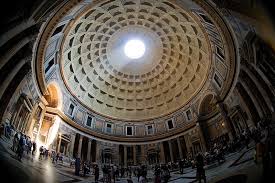
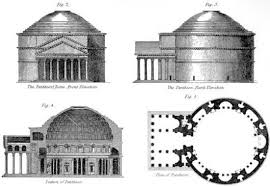
The Pantheon's dome is a perfect circle.The height to the oculus and the diameter of the interior circle are the same, 43.3 metres, so the whole interior would fit exactly within a sphere. It's still the largest dome in the world, it's also larger than San Pietro's dome. The wall of the Pantheon is very robust, because the weight of the dome is very much.The stresses in the dome were found to be substantially reduced by the use of successively less dense aggregate stones, such as small pots or pieces of pumice, in higher layers of the dome. In the top of the dome, there is a oculus. it has a diameter of 8.2 m. the light enters through it.
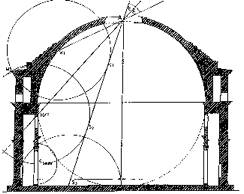
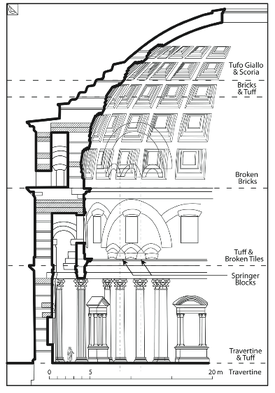
Source : www.Wikipedia.it